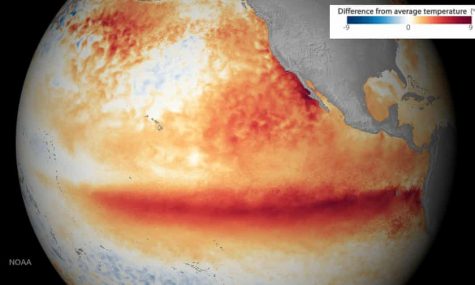El Niño…Again?
November 29, 2018

El Niño, the temporary climate change in the Pacific Ocean, has a high likelihood of happening again in 2019. According to the UN World Meteorological Organization’s latest analysis, there is a 75-80% chance of climate warming by February.
This event is formed by the warming of the Pacific Ocean. As the water gets increasingly warm, the winds begin to weaken. As the wind weakens, the waters have the opportunity to continue to warm, causing a dangerous cycle that can last about a year. El Niño recurs every three to seven years.
El Niño typically causes an influx of flooding in naturally warm places. Parts of South America and the southeastern United States are often affected by this. On the contrary, this event brings droughts in naturally damp places. Parts of Australia and Indonesia normally endure these droughts caused by El Niño. These effects are not guaranteed, but likely to occur. It is not likely that 2019’s El Niño will be as warm as the 2015-2016 spike.
The change in climate has many effects on the environment. Coral reefs are often damaged by bleaching due to the heat causing animals to lose their homes. Fish often chose to migrate if temperatures rise too quickly, affecting the main food source of many animals. Thousand of dead common murres, birds on the coast of Alaska, have been washing up along the shorelines due to starvation. In addition to changing the environment, El Niño also creates a higher probability of tropical storms. Although there are many negative effects of this event, there is an upside. In Death Valley, California, what is known as the, “super bloom” is occurring. The National Park, which was once a barren desert has become a valley filled with flowers.
The UN Food and Agriculture Organization warns that there may be food shortages in certain countries around the world because of the adverse effects of El Niño.

